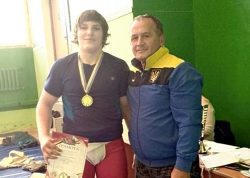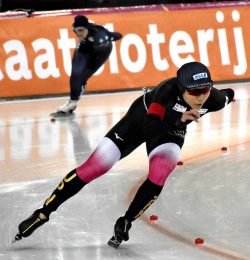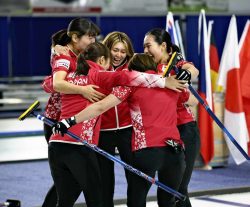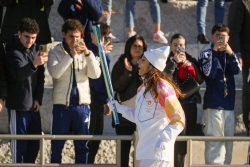Sanshiro Murao’s Fight to be ‘Real Deal’ in Judo Far From Over; Frustration in Paris Has Him Aiming for Los Angeles

Sanshiro Murao looks mortified after losing to Georgia’s Lasha Bekauri in the men’s 90-kilogram division at the Paris Olympics on Wednesday.
18:41 JST, August 1, 2024
Ever since he was a child, Sanshiro Murao has challenged stronger opponents in his quest to “be real.” At the Paris Olympics on Wednesday, the 23-year-old Japanese judoka faced his most powerful opponent of all — Georgia’s Lasha Bekauri, who is ranked first internationally and was a gold medalist at the Tokyo Olympics.
Competing in the 90-kilogram division, Murao was now only one step away from the very summit of his judo journey. He took the lead with a waza-ari. But in the end, he lost to Bekauri by ippon.
“I’m really disappointed that I didn’t get the gold medal I was aiming for,” Murao said in a strained voice, fighting back tears.
Murao’s father is Japanese and mother is American. He was given the old-fashioned name “Sanshiro” in the hope that he would “grow up to be a genuine Japanese.” Murao gained both flexibility and strength through also practicing gymnastics, rugby and sumo.
The judo club he joined when he was 5 had a training ground at the University of Tsukuba — a school with a highly competitive judo team — where he was taught the orthodox style of grabbing an opponent to set up a throw.
“The practice style has led me to where I am today,” Murao said.
He would go running on his own before practice at the dojo. In the sixth grade, he was not satisfied with practicing on junior high school students and fought against female university students hoping to “get stronger.”
Before enrolling in junior high school, Murao visited powerful schools in Japan and chose Nada Junior High School in Himeji, Hyogo Prefecture, for doing “the most rigorous training.” He scribbled down in his “judo notebook” that “I am the strongest” and got out of his dojo to practice against corporate athletes.
To fulfill his dream of competing in the Olympics, Murao enrolled in Toin Gakuen Senior High School in Kanagawa Prefecture, which urged him to “aim for the world.” While there, he also visited such judo powerhouses as Tokai University and Kokushikan University to practice with athletes who competed on the world stage.
Murao missed getting a ticket to the Tokyo Olympics, which made him feel that the big stage was “so close yet so far away.”
He said his turning point was the final of the 2022 All Japan Student Judo Championships in the team competition, where he said he “broke out of his shell.”
As the Tokai University ace, Murao fought against Kokushikan University’s Tatsuru Saito, who now represents Japan in Paris in the over 100-kilogram weight class. After more than 16 minutes of heated battle, Murao pinned his opponent — who outweighed him by a whopping 80 kilograms — to win by ippon.
“I could win a match where there was no way to win,” Murao recalled the moment when he got confident about himself.
Murao keeps etched in his mind the iconic words of former world heavyweight boxing champion Mike Tyson: “Be real.” Murao interprets the phrase to mean “to be the real deal.”
“I don’t want to win just for the sake of winning,” he said. “I’ve always wanted to be the real thing.”
But Murao’s public image is reinforced by work of fiction. “Sugata Sanshiro” happens to be an old Japanese novel whose title character is a judoka.
There has been “real Sanshiro” in the judo world of every era: the 1964 Tokyo Olympics gold medalist Isao Okano, now 80, who is known as the “Sanshiro of the Showa era” and the 1992 Barcelona Olympics gold medalist Toshihiko Koga, now deceased, who was nicknamed the “Sanshiro of the Heisei era.”
Murao, who can be called the “Sanshiro of the Reiwa era,” came very close to winning gold of his own, but came up just short.
“I want to return in four years,” said Murao. He pledges to clinch the gold at the next Olympics in Los Angeles — for real.
"Sports" POPULAR ARTICLE
-

Speed Skater Yukino Yoshida Clinches Ticket to Milan
-

Yoshinobu Yamamoto Cheered by Los Angeles Lakers Fans at NBA Game
-

Kenta Maeda Joins Rakuten Eagles; Returns from American MLB to Japanese Pro Baseball for First Time Since 2015
-

Maruyama’s Ski Jump Streak Snapped
-

Sumo Wrestler Aonishiki ‘Gives Courage to Ukraine,’ Says Childhood Mentor
JN ACCESS RANKING
-

Tokyo Economic Security Forum to Hold Inaugural Meeting Amid Tense Global Environment
-

Keidanren Chairman Yoshinobu Tsutsui Visits Kashiwazaki-Kariwa Nuclear Power Plant; Inspects New Emergency Safety System
-

Imports of Rare Earths from China Facing Delays, May Be Caused by Deterioration of Japan-China Relations
-

University of Tokyo Professor Discusses Japanese Economic Security in Interview Ahead of Forum
-

Japan Pulls out of Vietnam Nuclear Project, Complicating Hanoi’s Power Plans
























